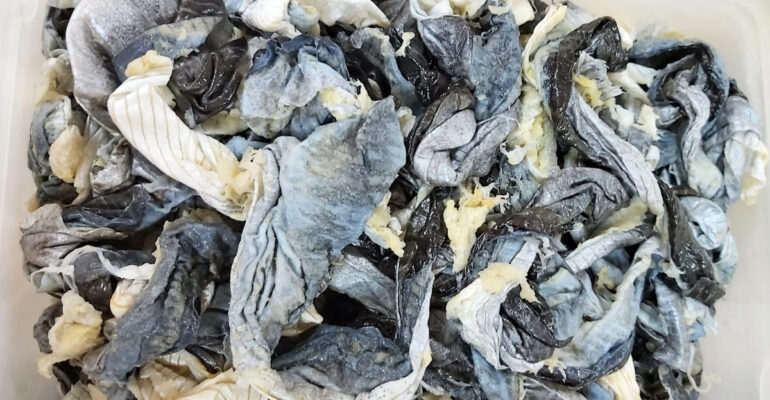IPB University Students Make Glue from Catfish Skin

Industrial activities cannot be separated from the waste produced from their production. In the catfish industry, for example, there is waste called catfish skin which is still rarely used. Three IPB University students, namely Erin Apriliani Wulandari Putri, Helda Yesi and Muh Tazri Nasirullah from the Department of Aquatic Product Technology made glue from catfish skin waste named GlueTin.
“Indonesia is the second biggest country that exports catfish after Vietnam. The catfish industry only uses the meat as fillets, and leaves the skin as a waste. The raw material for making fish glue is very abundant and easy to get,” said Erin.
She explained that the waste of catfish skin contains collagen which can be hydrolyzed into gelatin. Gelatin is the raw material for fish glue. Glue from fish skin is environmentally friendly, biodegradable and does not cause health risks. This glue could also be used as an adhesive for paper and wood.
The idea was originated from research topics of undergraduate students. It succeeded in delivering Erin and the team to get funding from the Ministry of Research, Technology and Higher Education of Indonesia through the Student Creativity Program in Research (PKMPE) 2019. The team was supervised by Dr Mala Nurilmala, SPi, MSi.
“The catfish skin was put into alkaline and acid dissolution, extracted using a waterbath shaker, then filtered to obtain liquid gelatin. This liquid gelatin reheated until it was solid (45-55 percent) to get the fish glue,” she said. Fish glue has the form of a thick caramel brown liquid. This research has been in the testing step, and the team had good results which were in accordance with the standards. The glue had also successfully bonded the wood tested.
“The application on wood was carried out using stickiness testing. Agatis wood was used and cut into smaller blocks (2.5×2.5×2 cm), then the fish glue was smeared on the wooden blocks. The blocks were pressed for 48 hours. After pressing, both ends of the blocks were pulled out as long as 0.5 cm, then tested using stickiness testing tool. The glue worked well on the wooden blocks”, said Erin. (IRM/ris/zsp)


